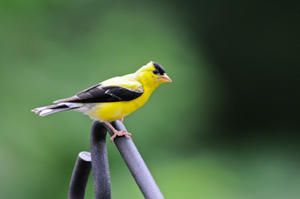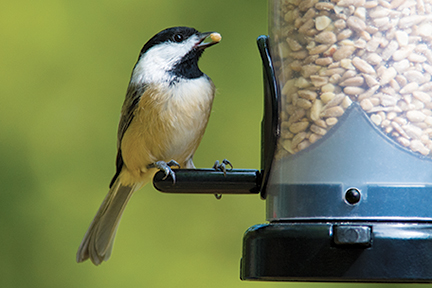
Fun Facts American Goldfinches
- Goldfinches are found across North America. The three species include the American, Lesser and Lawrence’s Goldfinch. American Goldfinch have an interesting flight call consisting of four syllables that can be likened to “po-ta-to-chip.”
- The genus name, Caruelis, is from the Latin word carduus, which means “thistle.” Goldfinches are very dependent on thistles for food and even use thistledown to line their nests.
- Northern populations of the American Goldfinch are mostly migratory and southern populations are mostly residential. Banding studies have revealed that some
- American Goldfinch in Ontario migrate more than a 1,000 miles to Louisiana.
- Female American Goldfinch will stay further south during the winter than males and younger males will winter further north than adult males. American Goldfinch rarely over-winter in northern areas where temperatures fall below 0°F for extended periods.
- The American Goldfinch is one of the latest breeding songbirds, waiting to nest until mid-to-late summer when thistle seeds and down are readily available. The female American Goldfinch chooses the nest site, builds the nest and incubates the eggs all on her own. The male feeds the female on the nest throughout incubation and takes on an ever increasing role in feeding the nestlings as they grow older. American Goldfinch can weave their nest so tightly that it will temporarily hold water.
- American Goldfinches prefer to nest in habitats with trees and shrubs and usually place their nest 4-10 feet high,. Goldfinches usually lay 5 pale-blue or greenish-blue eggs that will hatch in about 12 days. Nestlings will fledge about 12 days after that.
- American Goldfinch will use almost any feeder, including ones that require them to hang upside down to eat. Studies have shown their preference is to sit upright at perches on feeders that are hung in trees above head height.
- Unlike many birds, Goldfinches completely molt their feathers twice a year, before breeding in the spring and after nesting in the fall. During their fall feather molting, American Goldfinches grow a new set of feathers that are much denser than their summer plumage. These soft feathers provide an additional layer of insulation to help keep them warm throughout the winter.

